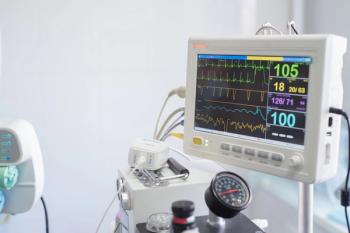
Hysterectomy may improve sexual function in women
In a recent study, sexual functioning outcomes were significantly improved in patients receiving hysterectomy, regardless of cervix preservation status.
Hysterectomy positively impacts sexual functioning (SF) because of symptomatic relief, according to a recent study published in Cureus.1
Hysterectomy is the most common gynecological procedure globally, used as treatment for either carcinological diseases or benign pathologies. The latter category accounts for most hysterectomies, with benign conditions including persistent abnormal uterine bleeding, uterine fibroids, adenomyosis, endometriosis, and uterine prolapse.
Both the uterus and the cervix undergo excision in total hysterectomy (TH), vs only the uterus in subtotal hysterectomy (STH). This distinction, alongside complications linked to hysterectomy such as hemorrhagic complications and vesicoureteral injuries, should be considered when planning hysterectomy.
A significant impact on SF is often considered a complication of hysterectomy.2 However, the role of the cervix in sexual satisfaction and response remains unclear, causing additional complications when deciding between TH and STH.1
Investigators conducted a study to evaluate SF outcomes following TH vs STH for benign conditions. Participants included women aged 40 to 65 years receiving a hysterectomy for benign indications at Ibn El Jazzar University Hospital, Kairouan, Tunisia, between January 2, 2020, and December 31, 2021.
Exclusion criteria included psychiatric conditions, SF-altering medication use within 3 months before the trial, needing concomitant surgical interventions, undergoing hysterectomy for hemostatic or carcinological reasons, and postoperative discovery of malignancy in the hysterectomy.
Participants’ medical history was assessed through a gynecological evaluation including transvaginal ultrasound, sample collection, and a gynecologic examination. Perioperative management included administration of perioperative prophylaxis for deep vein thrombosis, and a prophylactic antibiotic was administered during surgery.
Participants completed direct interviews for data collection. This included an initial evaluation the day before surgery and a second 6 months after surgery. Sociodemographic and clinical characteristics were obtained from medical and obstetric records.
The Arizona Sexual Experiences Scale (ASEX) and Female Sexual Function Index (FSFI) were used to evaluate SF. The ASEX is a 5-item questionnaire evaluating sexual arousal, sexual drive, vaginal lubrication, orgasm, and satisfaction. The FSFI is a 19-item questionnaire evaluating sexual arousal, desire, vaginal lubrication, pain, orgasm, and sexual satisfaction.
There were 60 patients included in the final analysis, 30 in the TH group and 30 in the STH group. Participants were aged a mean of slightly over 52 years, with a marriage duration of approximately 23 years. No formal education was reported in ¼ of participants, and a poor economic level in almost half.
Diabetes was reported in approximately ¼ of participants, and a history of childbirth in 90%. Approximately 14.5% of patients had undergone a cesarean section during delivery. The mean age of menopause was 46 years, impacting 70% of participants.
Chronic pelvic pain, abnormal uterine bleeding, and sensation of a ball in the vagina were reported in half, 1/3, and 1/5 of patients, respectively. Ten percent of patients experienced postoperative complications.
Both groups had improvements in SF in postoperative vs preoperative evaluations. These improvements were reported in all domains, including sexual arousal, desire, lubrication, pain, orgasm, and satisfaction. The mean ASEX score was reduced from 25.1 preoperatively to 21.1 postoperatively, indicating an improvement in SF after hysterectomy.
The preoperative FSFI score was 11.9, indicating significant sexual dysfunction in both groups. SF significantly improved following the procedure, with the mean FSFI score increasing to 19.3.
The normal threshold of 26.55 was surpassed by 10% of the TH group and 26.7% of the STH group postoperatively, vs only 6.7% of both groups preoperatively. However, significant variations in the magnitude of score increases before vs after surgery were not observed between groups.
These results indicated overall improvements in SF following hysterectomy, without significant differences between TH and STH. Investigators concluded cervix preservation should not be recommended for improving overall satisfaction.
References
- Ferhi M, Marwen N, Abdeljabbar A, Mannai J. To preserve or not to preserve: A prospective cohort study on the role of the cervix in post-hysterectomy sexual functioning. Cureus. 2024. doi:10.7759/cureus.68876
- Monterrosa-Castro A, Monterrosa-Blanco A, Beltrán-Barrios T. Insomnia and sexual dysfunction associated with severe worsening of the quality of life in sexually active hysterectomized women. Sleep Sci. 2018;11:99-105. doi:10.5935/1984-0063.20180019
Newsletter
Get the latest clinical updates, case studies, and expert commentary in obstetric and gynecologic care. Sign up now to stay informed.











